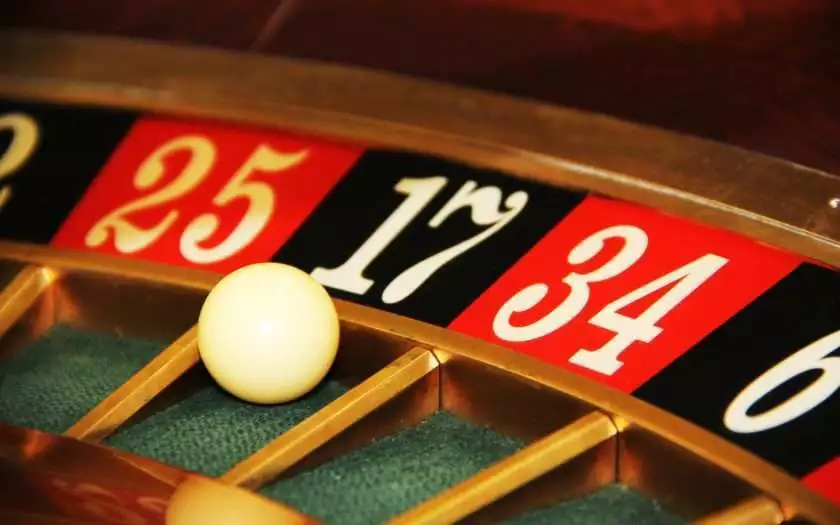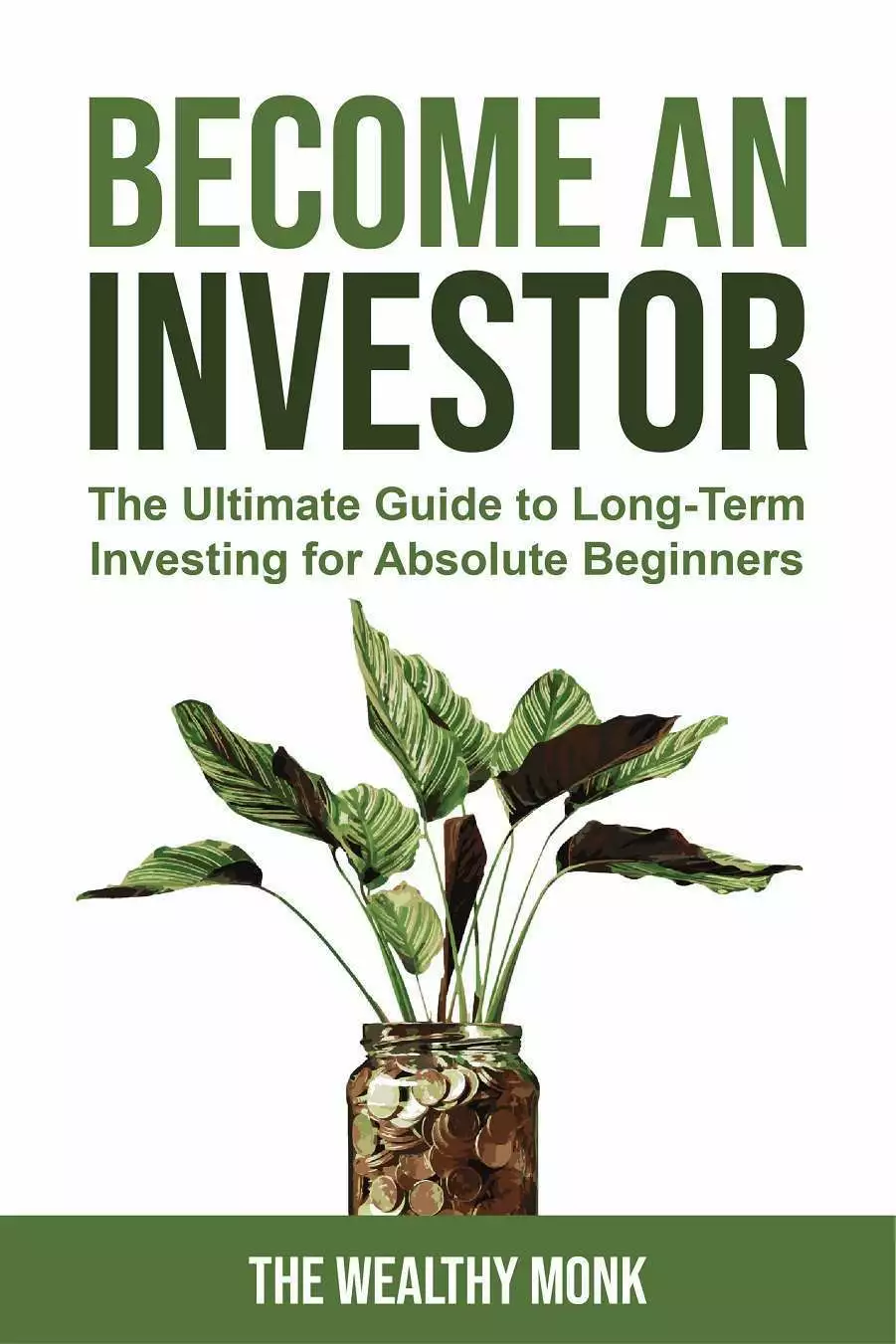
The Young Monk’s Adventures – Modified Martingale Roulette Strategy
The Young Monk’s Adventures will be a set of posts detailing how the younger me approached earning money or personal finance in general. This post is dedicated to a Roulette strategy I played for a while and ended up with a pretty high ROI while having tons of fun.
But before going into the details of what I was doing, let me describe what is the gambler’s fallacy.
Gambler’s fallacy
The gambler’s fallacy is the mistaken belief that, if something happens more frequently than normal during a given period, it will happen less frequently in the future (or vice versa). In situations where the outcome being observed is truly random and consists of independent trials of a random process, this belief is false. The fallacy can arise in many situations, but is most strongly associated with gambling, where it is common among players.1
This will be really important later in the post.
Aaaanyway, after taking my time to observe it for a while… I decided to give it a shot.
To give WHAT a shot?
Well, there was this roulette strategy I found in high school… At least I thought I did. Later I found out that it already had a name – Martingale.
Roulette and probability
There are several ways in which you can place bets in the game of roulette:
- Betting that the ball will land on a specific portion of the wheel,
- Betting on a number ([0-36]) or multiple numbers,
- Betting on nearly third of the numbers (1-12; 13-24; 25-36),
- Betting on nearly half of the numbers (high / low; red / black; even / odd), etc…
Let’s focus on the last one for explanation purposes. We will use the red / black example but the same goes for any of those, as will be explained later.
The probability of guessing red (or black) is slightly less than 50%. 18 of the numbers on the board have the same color, 18 have the other color, and there is the zero. However, we are not interested in approximations – the way you calculate the probability of any event is as follows:
You get the number of outcomes of interest – |X|, and you divide it by the number of all possible outcomes – |ALL|. So, the probability that an event X will happen is P(X) = |X| / |ALL|. In our example:
- X is getting a red number on a roulette spin;
- |X| is the number of red numbers – 18;
- |ALL| is the number of all possible outcomes – 37.
So, the probability of X happening is P(X) = 18/37 = 0,48 (which is 48%).
The difference between a casino game and a fair 50/50 game of chance (such as a coin flip) is called a “house edge”, which makes the casino games mathematically unbeatable.
Now, since there is not a possible way to know what the outcome of a fair spin will be, we won’t focus on the probability of only one spin (we are not gamblers). The strategy is based on multiple spins, so let’s analyze the probability of a sequence of outcomes.
A little probability and Gambler’s Fallacy in action
The way you calculate the probability of multiple independent events happening is by multiplying their probabilities. Let’s calculate the probability of the following event: not rolling a 6 on a dice and getting heads on a coin toss. The probability of not rolling a 6 on a dice is P(A) = 5/6, and the probability of getting heads on a coin toss is P(B) = 1/2. The probability of both A and B happening is P(A & B) = P(A) X P(B):
P(A & B) = 5/6 x 1/2 = 5/12 = 0.41 (41%)
How can we use this for roulette? Let’s look at the example with our color – red. The probability of getting red is P(RED) = 18/37 = 0,48. The probability of getting red 2 times in a row is P(2RED) = P(RED) X P(RED) = 0,48 x 0,48 = 0,23. So the odds are drastically lower if we expect a red outcome multiple times. If we continue, we’d get:
- P(RED) = 0,48
- P(2RED) = P(RED) x P(RED) = 0,48 x 0,48 = 0,23
- P(3RED) = P(2RED) x P(RED) = 0,23 x 0,48 = 0,11
- P(4RED) = P(3RED) x P(RED) = 0,11 x 0,48 = 0,05
- P(5RED) = P(4RED) x P(RED) = 0,05 x 0,48 = 0,02
- P(6RED) = P(5RED) x P(RED) = 0,02 x 0,48 = 0,009…
And this is exactly where the gambler’s fallacy kicks in. Two non-exhaustive reasons:
- This same analysis will show that the probability of getting RED 3 times in a row is the same as the probability of getting a RED, RED, BLACK sequence. Namely, P(RRR) = 0,48^3 = 11% = P(RRB). And is also equal to any combination of red / black.
- Each event is independent, period. The game of roulette doesn’t have memory and past numbers don’t influence future spins. Whatever happened happened and the chance of the ball landing on red is 48% for that spin, regardless of how many reds there were before.
However, already knowing that I can’t beat the casino, the question was turned into: will I take the risk of betting that a sequence won’t land on the same color for more than X times? And the answer was yes.
Hell yeah!
I paired up with a friend and we went observing. We were going to various casinos to play with ~2$, and by “play” I mean sitting and watching the outcomes. I’m talking about high school students with plenty of time to spare and burning desire to earn EZ money. For those asking themselves, living in a second world country made it easy for us to gamble as underage teens.
Anyway, there was rarely a sequence with more than 6 same colors in a row.
So what can we do with that information?
The Martingale strategy on Roulette
Instead of explaining it in theory, let me describe the strategy using a few scenarios.
Scenario 1
- You bet 1$ on red. Outcome of the spin: red.
- You won 2$, and you are 1$ richer.
Scenario 2
- You bet 1$ on red. Outcome of the spin: black.
- You bet 2$ on red. Outcome of the spin: red.
- You won 4$, and you are 1$ richer.
Scenario 3
- You bet 1$ on red. Outcome of the spin: black.
- You bet 2$ on red. Outcome of the spin: black.
- You bet 4$ on red. Outcome of the spin: red.
- You won 8$, and you are 1$ richer.
So, the idea is: even if you’re wrong the first time (or first few times), you just double the bet on the next spin. If there is no glitch in the matrix, we won’t get black numbers forever. Eventually, a red will come, and that’s the spin in which you get all your lost bets back, and on top of that, you make a profit equal to your initial bet. Then, you just start over.
Here is a table explaining the strategy in greater detail, assuming that your initial bet will be 1$:
| SPIN | BET | SUM (BET) | WIN | EARNED |
| 1 | 1$ | 1$ | 2$ | 1$ |
| 2 | 2$ | 3$ | 4$ | 1$ |
| 3 | 4$ | 7$ | 8$ | 1$ |
| 4 | 8$ | 15$ | 16$ | 1$ |
| 5 | 16$ | 31$ | 32$ | 1$ |
| 6 | 32$ | 63$ | 64$ | 1$ |
| 7 | 64$ | 127$ | 128$ | 1$ |
| 8 | 128$ | 255$ | 256$ | 1$ |
| 9 | 256$ | 511$ | 512$ | 1$ |
| 10 | 512$ | 1023$ | 1024$ | 1$ |
| … |
- BET is how much money you put on that spin;
- SUM (BET) is how much money you’ve put until that moment;
- WIN is how much you would win if you get it on that spin;
- EARNED is WIN – SUM(BET), which gives the amount of money you’ll earn when you win. This is always equal to the initial bet.
So basically, by going in with 1023$, you’ll have the option to “defend” yourself 10 times. And remember, you don’t have to play this only with colors. You can bet on high vs low numbers or even vs odd numbers.
The amounts in the table are for instructional purposes, you don’t always have to start with 1$. You can start from a quarter, and double your way up as you lose and start over with a quarter when you win. You can choose what’s best for you by taking into account your capital, the time you’d spend playing daily and other factors (such as casino limits, discussed below).
To wrap it up: if you win, you always go back to the first spin and place your initial bet. If you lose, you just double the bet.
So… What can possibly go wrong?
How the casinos protect themselves?
- The casinos have an upper limit on how much you can bet on, for example, red (or any other option, of course). That means that you can’t really bet with thousands of dollars to cover your losses to that point.
- The casinos have the option to kick you out.
- The casinos are not responsible for system malfunctions or human errors. If you accidentally press a button twice and the revert button doesn’t work, you’re done.
And don’t forget that the growth of the bets is exponential and the psychological pressure is really high when you’re betting your full balance. Being an emotionless robot by sticking to the strategy and accepting the fact that eventually you’ll lose your initial investment are of great help here.
But the tips and tricks are part of the following section.
How I protect myself?
First and foremost, I test everything before I play. I test that:
- The limits are as expected,
- All the relevant buttons work,
- There is no shadiness in the casino – including easy withdrawals without placing any bets,
- It’s easy to place bets, easy to double bets, easy to undo the last step, easy to remove all bets.
If there are no technicalities holding me back, then I continue protecting myself against the functional things. Namely:
- There will always be an upper limit on how much we can bet. That’s why you get a buddy with you. This person won’t only help you invest the excess amount once a single machine can’t cover the full bet, but will also make the experience more enjoyable, as you’re hanging out with a friend while playing. For example, let’s say you need to bet with 512$, but the limit on red / black bets is 400$. You put 400$ and place a 112$ bet from your buddy’s machine to cover the difference. Make sure to know the actual numbers in advance so you can prepare and distribute your capital accordingly.
- Never earned more than 100$ in one sitting. Okay, maybe the first few days, but once I evaluated the long-term potential of the strategy, I started looking at making more money as a liability and decreased my “working hours”. Behave nicely and dress neatly as well. You won’t be kicked out if you don’t draw any attention to yourself.
- Diversify across casinos. Keep track of when you played where and adjust the frequency.
- I’m really good at being an emotionless robot.
- I went into this with around 500$, which was an amount I decided to risk for the purposes of playing the strategy. The good news is that within a week I made profits higher than my capital and that’s when I scaled the earning down a little bit. I was playing with their money and was really comfortable with losing my initial investment.
When talking to people I got the remark of: “You’re risking 500$ to get 1$!” to which I always answered “To get 1$ 500 times.“. And after the first few days in which I covered myself, I was more and more confident to play.
However, I didn’t really play the standard Martingale strategy. I found out how the risk and the base of the exponentiation are related and created an abstraction, still based on geometric progression, which I could extend and create an implementation from. But it’s not summarizable (maybe this isn’t a word) in a sentence, so let’s dedicate a whole section to it.
My way of Geometric Progression betting
So, what we’ve learned so far is that regardless of the history, each outcome has the same chance of occurring. That means, theoretically, that you can use a Martingale system and keep doubling your bets if you lose, so if you had an infinite amount of money, you’d always make a profit equal to your initial bet.
However, in reality there is a limit to how much we can bet and we don’t have unlimited amount of money. But one thing we can do to optimize is to increase the probability of winning on each turn.
We know that regardless of the history, each turn was ~50%. Let’s bump it up to ~66%!
How?
No magnets, no scams, no fancy roulette tricks.
My preferred way of playing roulette was using the thirds (instead of the halves) and covering two thirds of the non-zero numbers. The higher coverage was associated with higher betting progressions, but let me explain it using an example.
I put 1$ on the 1st (1-12) and the 2nd (13-25) third. Similarly as above, if I win, I use the same amount. But if I lose, I triple the bet on the two thirds. Here’s a table summarizing the process:
| SPIN | BET #1 | BET #2 | SUM (BET) | WIN | EARNED |
| 1 | 1$ | 1$ | 2$ | 3$ | 1$ |
| 2 | 3$ | 3$ | 8$ | 9$ | 1$ |
| 3 | 9$ | 9$ | 26$ | 27$ | 1$ |
| 4 | 27$ | 27$ | 80$ | 81$ | 1$ |
| 5 | 81$ | 81$ | 242$ | 243$ | 1$ |
| 6 | 243$ | 243$ | 728$ | 729$ | 1$ |
| … |
- BET 1 and 2 are the bets I put on two of the three thirds of the numbers between 1-36.
I’m using 1$ for the sake of simplicity but my initial bet was a bit higher – the optimal number to go around the limits we could have bet on using thirds. The details are not important at this moment.
Forget about it for now please.
Let’s go on.
I preferred this method compared to the red / black because the probability of winning on each spin is 24/37 (64%) instead of 18/37 (48%). This led to faster wins, lower waiting time per winning sequence, and brought the same amount of money in half the time. The only downside is that you need to triple your bet amount and place it on two places, but that’s the premium we can afford to pay for placing them sweet ~2/3 bets instead of a lousy ~50/50 bet.
Okay, so this raises the question: Why bet on two thirds and not three fourths, nine tenths, or thirty four thirty-fifths?
They’re all valid! But, although not quantifiable, let’s account for the worth of simplicity.
Basically, the roulette lets you bet on thirds easily.
You just press a button and put a bet on 1-12 for example. There is no simple way to bet on “all 35 numbers expect for one” apart from manually picking each number – which exposes us to the risks of human error and panic.
Long story short: playing the thirds was most practical and that’s where the simplicity curve intersected with the amount of money I could afford to risk and the betting limits dictating what my initial bet would be.
Did I ever lose?
Always.
But still ended up with a significant ROI. Let me explain.
Eventually, there will be a sequence where you won’t be able to cover anymore, but that should be expected and accounted for before starting. The good thing about this strategy is that, unless extremely unlucky, it lets you make a revenue higher than your starting capital in a small amount of time and all the money you make afterwards is net profit.
And what did I do after a loss?
Nothing. I chilled out and continued playing using the profits as operating capital. Which brings us to:
Why I stopped playing?
There are multiple reasons why I don’t play this anymore. Let me list the most important ones:
- It’s not passive and the profits are inferior to my current earning potential.
- It’s also not really a model that’s scalable. It is what it is. Employing people to play it for you is practically impossible and any scalability I can think of requires crazy amounts of human interaction, coordination, time, and effort invested.
- If you do decide to scale it, there’s the (high) opportunity cost of investing in yourself, your career, or other more profitable ventures. When I was playing, I was sitting with friends I would’ve hanged out with even if we were not playing Roulette.
- Automating it online can and will get you banned. Going around the limits in online casinos is much harder than inviting a buddy as a backup. You can just sit around the same Roulette wheel and play.
- Lack of control / over-dependence on a third party platform (casinos). Make it your single source of income and take the risks of, for example, a tax reform ruining your life. And if you don’t make it your single source of income, eventually there will be more lucrative opportunities.
And also, the longer the sequence you want to cover, the greater the amount of money at risk. Given enough playtime, eventually there will be a series where you’ll lose. And we saw how the bets grow in the first 10 bets, but here’s what happens with the next 10 bets using the 50/50 approach:
- 2^0 = 1
- 2^1 = 2
- 2^2 = 4
- 2^3 = 8
- 2^4 = 16
- 2^5 = 32
- 2^6 = 64
- 2^7 = 128
- 2^8 = 256
- 2^9 = 512
- 2^10 = 1024
- 2^11 = 2048
- 2^12 = 4096
- 2^13 = 8192
- 2^14 = 16384
- 2^15 = 32768
- 2^16 = 65536
- 2^17 = 131072
- 2^18 = 262144
- 2^19 = 524288
- 2^20 = 1048576
It’s an exponential growth and an amount of money most people will never even own. And couple it with casino limits and realistic expectations – Martingale is not a profitable system without infinite $$$.
By the way, 26 blacks happened… In 1913. In Monte Carlo – and that’s how The Gambler’s Fallacy became also known as the Monte Carlo fallacy. But if a case is so rare to be remembered after more than a century… Why not… Hmm…
Let’s leave hard science aside and let me give you my closing thoughts.
Closing thoughts
Yes, the strategy is not full proof. Yes, each spin is independent. And yes, it’s not mathematically profitable without infinite cash.
And I loved it!
Playing it as a high-school student was an eye opening experience and, similar to other side-income-generating ventures, it can assist developing the mentality that income doesn’t have to be tied with a life-long anchor to a stupid chair. It won’t teach you that time is not necessarily money though, as you’re still required to show up and do the actual work. However, it will show you that what some people earn in a week, you can make in one sitting while actually having fun.
Again, every side hustle can be an eye opening experience for many.
If someone would ask me if I recommend it, here are my thoughts: Is it a risk you’re willing to take? How much do you earn per hour and how much free time do you have? Is this something that sparks your interest?
If you’re a student who can look at this as a great way to spend some time with an equally interested friend and have a few hundred bucks to spare – why not? Sticking to the strategy won’t hurt and at the worst case scenario you’ll only lose an amount you’re ready to lose by entering in a casino with it.
Earning 50-100$ per day can be life changing amounts for some people, especially in poorer countries.
And just to be completely clear: I’m not recommending gambling!23
The actual closing thoughts
If we never take risks, we’ll never realize any gains in our lives. And I’m talking both material and non-material gains. Even the most conservative of the risks, such as changing a job, can improve one’s life tremendously. They can also put you a few steps back, but the lesson will make you walk faster and catch up – this time with extra knowledge and experience.
Another thing it taught me is to put more weight into the opinions of unbiased people with first hand experience than overthinking theorists who need centuries to make a move and failing each time simply because they can’t acknowledge the fact that we don’t live in a perfect world.
With all that said, the strategy is actually profitable if you have unlimited amount of money, unlimited amount of time, and there are no limits to how much you can bet.
But on the other hand, everything will happen in an unlimited amount of time. So there is a 100% chance that there will be a sequence in which the ball will land on black forever… But this gets us to exploring the cardinality of infinite sets, so why don’t we just stop here?
















No Comments